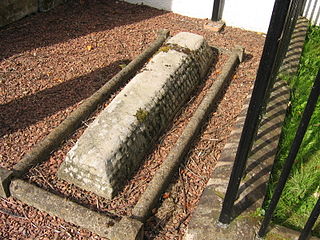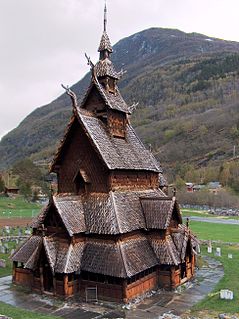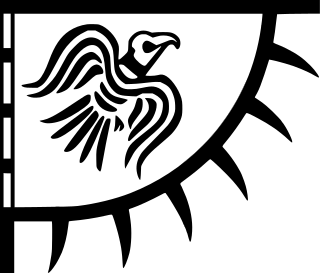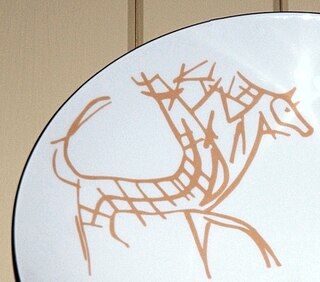 W
WThe Lilleberge Viking Burial or Lilleberge Ship Burial is a major hoard of Viking objects found in a barrow at Lilleberge in Namdalen, central Norway in the late nineteenth century. Since 1891, it has been an important part of the British Museum's early medieval collection.
 W
WThe Tromsø Burial or Tromsø Grave Group is a significant hoard of Viking objects found near Tromsø, in the far north of Norway, in the late nineteenth century. Since 1900, the group has been part of the British Museum's early medieval collection.
 W
WViking art, also known commonly as Norse art, is a term widely accepted for the art of Scandinavian Norsemen and Viking settlements further afield—particularly in the British Isles and Iceland—during the Viking Age of the 8th-11th centuries CE. Viking art has many design elements in common with Celtic, Germanic, the later Romanesque and Eastern European art, sharing many influences with each of these traditions.
 W
WThe Cammin Casket was made in southern Scandinavia around the year 1000 and decorated in the Mammen style. It held the relics of Saint Cordula. Until the Second World War, it was on display in the Cathedral of Saint John in Cammin in Western Pomerania. The box disappeared during the war, when the church's interior was almost completely destroyed by fire. Several copies survive.
 W
WThe Celtic brooch, more properly called the penannular brooch, and its closely related type, the pseudo-penannular brooch, are types of brooch clothes fasteners, often rather large; penannular means formed as an incomplete ring. They are especially associated with the beginning of the Early Medieval period in the British Isles, although they are found in other times and places—for example, forming part of traditional female dress in areas in modern North Africa.
 W
WThe Cross of Cong is an early 12th-century Irish Christian ornamented cusped processional cross, which was, as an inscription says, made for Tairrdelbach Ua Conchobair, King of Connacht and High King of Ireland to donate to the Cathedral church of the period that was located at Tuam, County Galway, Ireland. The cross was subsequently moved to Cong Abbey at Cong, County Mayo, from which it takes its name. It was designed to be placed on top of a staff and is also a reliquary, designed to hold a purported piece of the True Cross. This gave it additional importance as an object of reverence and was undoubtedly the reason for the object's elaborate beauty.
 W
WThe Eyrarland Statue is a bronze statue of a seated figure (6.7 cm) from about AD 1000 that was recovered at the Eyrarland farm in the area of Akureyri, Iceland. The object is a featured item at the National Museum of Iceland. The statue may depict the Norse god Thor and/or may be a gaming-piece.
 W
WGullgubber or guldgubber (Danish), guldgubbar (Swedish), are art-objects, amulets, or offerings found in Scandinavia and dating to the Nordic Iron Age. They consist of thin pieces of beaten gold, usually between 1 and 2 cm2. in size, usually stamped with a motif, and are the oldest examples of toreutics in Northern Europe.
 W
WThe Hiddensee treasure was found in 1873 on the German island of Hiddensee in the Baltic Sea by chance, during rebuilding after significant flooding in 1872 and 1873.
 W
WHogbacks are stone carved Anglo-Scandinavian sculptures from 10th- to 12th-century England and Scotland. Singular hogbacks were found in Ireland and Wales. Hogbacks fell out of fashion by the beginning of the 11th century. Their function is generally accepted as grave markers.
 W
WThe ninety-three game pieces of the Lewis chessmen hoard were found on the Isle of Lewis in the Outer Hebrides of Scotland. Medieval in origin, they were first exhibited in Edinburgh in 1831 but it is unclear how much earlier they had been discovered. The hoard comprised seventy-eight distinctive chess pieces and fifteen other non-chess pieces, nearly all carved from walrus tusk ivory, and they are now displayed at the British Museum in London and National Museums Scotland in Edinburgh. Another chess piece, which turned up in 1964 and in 2019 was attributed to have come from the original hoard, now belongs to an undisclosed owner.
 W
WThe major aspects of Medieval Scandinavian architecture are boathouses, religious buildings, and general buildings.
 W
WOdin from Lejre is a small cast silver figurine from approximately 900 C.E., depicting an individual on a throne flanked by two birds and two animal heads.
 W
WThe Oseberg tapestry is a fragmentary tapestry, discovered within the Viking Oseberg ship burial in Norway.
 W
WThe Överhogdal tapestries are a group of extraordinarily well-preserved textiles dating from late Viking Age or early Middle Ages that were discovered in the village of Överhogdal in Härjedalen, Sweden.
 W
WThe Rällinge statuette is a seated figure in bronze, discovered in Södermanland, Sweden in 1904 and dated to the Viking Age. The seven-centimetre-high figure, who wears a conical headdress, clasps his pointed beard and has an erect penis, has often been assumed to be the god Freyr. This is due to an 11th-century description of a phallic Freyr statue in the Temple at Uppsala, but the identification is uncertain.
 W
WThe raven banner was a flag, possibly totemic in nature, flown by various Viking chieftains and other Scandinavian rulers during the 9th, 10th and 11th centuries. The flag, as depicted in Norse artwork, was roughly triangular, with a rounded outside edge on which there hung a series of tabs or tassels. It bore a resemblance to ornately carved "weather-vanes" used aboard Viking longships.
 W
WA runestone is typically a raised stone with a runic inscription, but the term can also be applied to inscriptions on boulders and on bedrock. The tradition began in the 4th century and lasted into the 12th century, but most of the runestones date from the late Viking Age. Most runestones are located in Scandinavia, but there are also scattered runestones in locations that were visited by Norsemen during the Viking Age. Runestones are often memorials to dead men. Runestones were usually brightly coloured when erected, though this is no longer evident as the colour has worn off. Most runestones are found in present-day Sweden.
 W
WThe style or design of runestones varied during the Viking Age. The early runestones were simple in design, but towards the end of the runestone era they became increasingly complex and made by travelling runemasters such as Öpir and Visäte.
 W
WThe Skien animal was found during an excavation in Skien, Norway, in 1979. It is carved into a plank, and is dated to the 9th century. This, and other findings, shows that Skien was a trading centre from before year 1000, and Skien was therefore celebrating its 1000-year jubilee in the year 2000.
 W
WThe St Ninian's Isle Treasure, found on St Ninian's Isle, Scotland in 1958 is the best example of surviving silver metalwork from the Early Medieval period in Scotland. The 28-piece hoard includes various silver metalwork items, including twelve pennanular brooches. The treasure is now in the National Museum of Scotland.
 W
WThe Valkyrie from Hårby is a small figurine in silver, likely representing a valkyrie, from the Viking Age. It was found by an amateur archaeologist near the village of Hårby on the island of Fyn.
 W
WThe Visby lenses are a collection of lens-shaped manufactured objects made of rock crystal (quartz) found in several Viking graves on the island of Gotland, Sweden, and dating from the 11th or 12th century. Some were in silver mounts with filigree, the mounting covering the back of the lens, and were probably used as jewellery; it has been suggested that the lenses themselves are much older than their mounts. Some of the lenses can be seen at the Fornsal historical museum in Visby, while some are in the Swedish National Museum in Stockholm, and others have been lost.